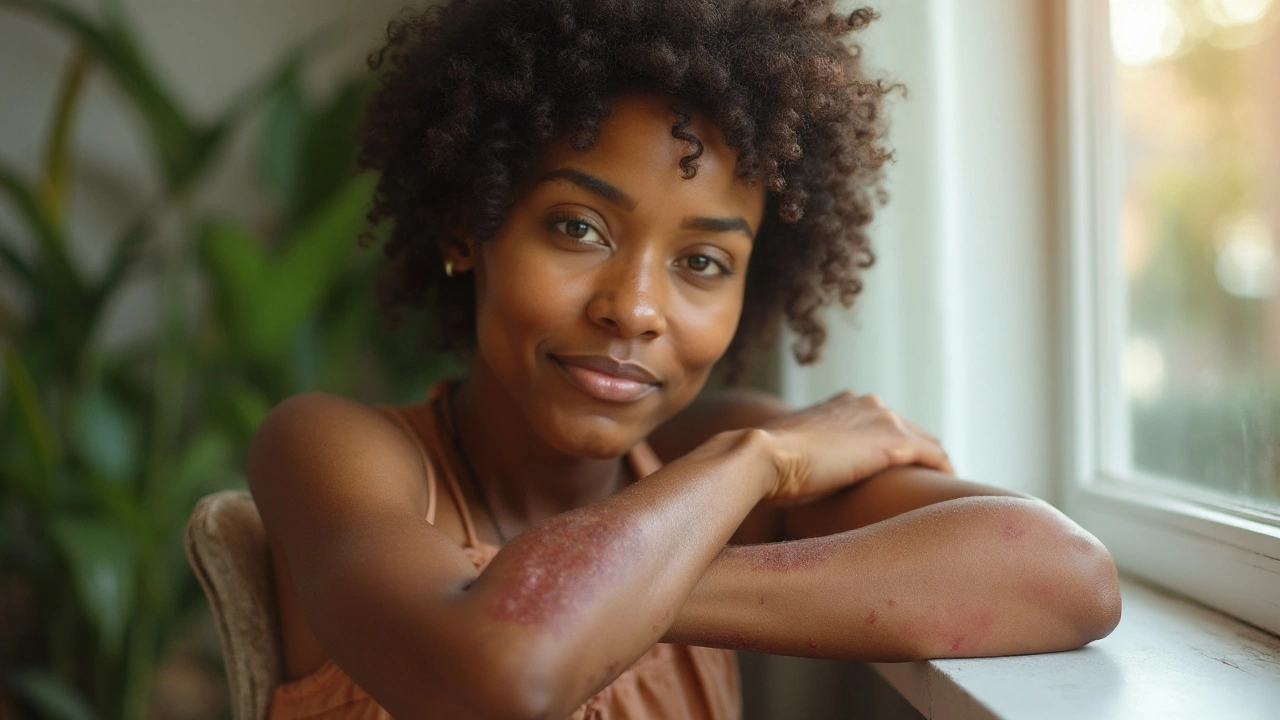Skin Disease: What You Need to Know
Skin problems affect everyone at some point – from a stubborn pimple to a painful rash. The good news is most issues have clear signs and simple ways to handle them. In this guide we’ll break down the most common skin diseases, what they look like, and practical steps you can take right now. No fancy jargon, just straight‑forward advice you can use today.
Common Types and How They Show Up
Acne is probably the most talked‑about skin condition. It starts with clogged pores, leading to whiteheads, blackheads, and sometimes inflamed red bumps. If you notice frequent breakouts on your face, chest, or back, you’re likely dealing with acne. Another frequent culprit is eczema, which appears as itchy, red patches that can crack and bleed. Psoriasis shows up as thick, silvery scales that often cover elbows, knees, or scalp. Fungal infections, like athlete’s foot, cause itchy, moist areas that may look white or blistered.
Even infections that seem unrelated to the skin can show up on the surface. For example, bacterial skin infections—such as those caused by Staphylococcus aureus—often begin as small, painful spots that quickly turn into larger, pus‑filled lesions. If you notice a spot that’s getting hotter, redder, and draining fluid, you might need a prescription antibiotic.
Practical Treatment Tips
Start with the basics: keep the affected area clean, avoid harsh scrubbing, and use gentle moisturizers. For acne, over‑the‑counter benzoyl peroxide or salicylic acid can reduce oil and inflammation. When those aren’t enough, a doctor may prescribe oral antibiotics like clindamycin, which targets the bacteria that fuel breakouts. Follow the dosage guide carefully and finish the whole course, even if your skin starts improving.
Eczema benefits from thick, fragrance‑free creams that lock in moisture. Applying a steroid cream for a short period can calm flare‑ups, but don’t let it become a daily habit unless a doctor advises. Psoriasis often requires stronger treatments such as topical vitamin D analogues or systemic meds for severe cases. Light therapy is another option if creams don’t work.
If you suspect a fungal infection, an antifungal cream or oral tablet can clear it in a week or two. Keep the area dry and change socks or underwear daily to prevent re‑growth. For bacterial infections, a short course of antibiotics—like the clindamycin mentioned earlier—usually resolves the issue. Watch for signs of spreading, such as fever or increasing redness, and seek medical help right away.
When home care isn’t enough, seeing a dermatologist is the smartest move. They can confirm the diagnosis, prescribe the right medication, and give personalized advice. Remember, most skin diseases are manageable, and early treatment often prevents scarring or long‑term damage.
Bottom line: identify the pattern, keep the area clean, use targeted treatments, and don’t hesitate to get professional help if things don’t improve. Your skin is the body’s biggest organ—taking care of it pays off in confidence and comfort.
Plaque Psoriasis and Mental Health: How Skin Links to Mood
Explore the strong connection between plaque psoriasis and mental health, covering causes, impacts, screening, and holistic treatment options for better wellbeing.

